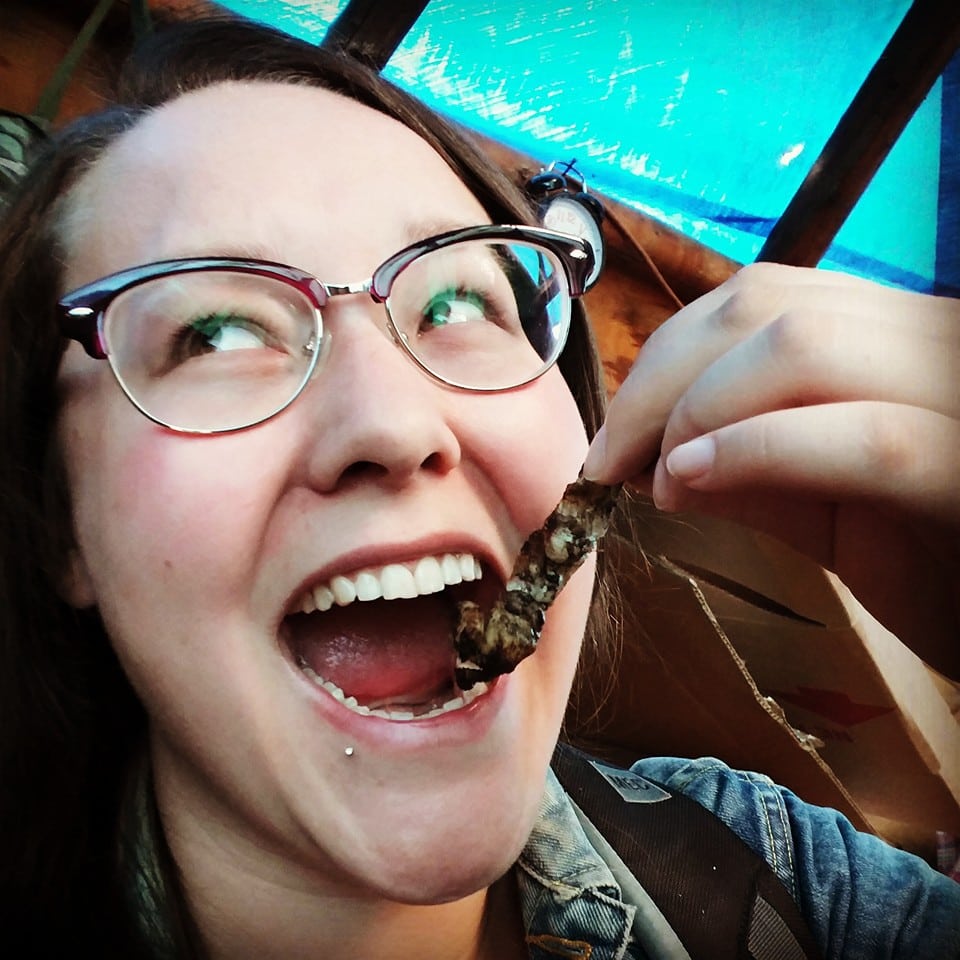By Sara Mai Chitty, Community Journalism Trainer
It was a gorgeous summer day, perfect for tossing a frisbee. We were outside our workshop space, killing time waiting for the other participants. The intoxicating smell of a nearby woodfire infiltrated our noses and I wondered where it was coming from.
“It’s the teepee right there,” said one of my trainees, Debbie. “I’m going to go see if they’re making tea.”
Debbie disappeared for a bit, then returned with tea and an invitation.
Cathy Pemmican was inside the teepee making fish pemmican with an Elder and offered us to come document it.
I went to grab the cameras for the trainees, and we entered the teepee.
Inside, suckerfish were drying above a fire. The Elder’s name is Jeanette and she has been making pemmican for over 70 years. She also knows how to make snowshoes, a lost art in the community, Cathy lamented.
A giant pot full of pemmican, made up of around 15 fish, was roasting over the fire. It kind of looked like shaved wood. This was pemmican in its final stages. Cathy stirred it occasionally with a spoon she said was made specifically for stirring the pemmican.
We snapped photos and chatted about the process over tea. When the trainees felt they had documented everything, we thanked them for their hospitality and left.
We found ourselves back in the teepee a few days later.
This time, Cathy wasn’t there, but a couple kookums were executing a different stage in the pemmican making process.
They were cleaning the fish as more fish dried over the fire.
First the fish are dried, then brought closer to the fire to be smoked. Then the fish are broken up into the pot, and the meat is separated from the bones.
Every piece of the fish is used for something. The two Elders were methodically sorting fish guts, separating eggs, stomachs, heads, and other organs like the liver and heart.
Debbie said sometimes people make bannock with the fish eggs, another favourite treat here. It all gets cooked and eaten. The fish stomachs were like little balloons, and the Elder skewered them on a stick, then cooked them over the fire.
My trainees started teasing me. “You have to try one!” And of course I had to try one! I’ll try anything once. I remember trying octopus in Mexico, and it turned me off meat for a week, so I was a little apprehensive, but couldn’t say no.
The texture was bizarre, a little rubbery and at one point crunchy, but the flavour wasn’t unpleasant. Debbie had three or four, while another trainee, Amelia, spit hers out. Debbie’s son was tagging along, and he could not be persuaded.
We took a few more photos and headed back out, thanking the ladies for their patience and generosity.
I later learned the fish heads would be boiled to extract fish oil, which is used to mix with the pemmican when people are ready to eat it. The finished product is essentially dried fish flakes that doesn’t really even smell fishy. Some people add it to soup, while others eat it mixed with the oil, or sometimes blueberries.
Making pemmican takes well over 10 hours to prepare and cook, not to mention the time spent fishing, but the end product lasts for a very long time.

Fish are a major staple in the diets of many people in Kasabonika Lake, and pemmican is a great way to preserve it.
The trainees aim to piece together the photos they captured in a photo essay, so stay tuned!








